By Wang Tao (Yangli), Chen Qiukai (Qiusuo) and Xu Zhihao (Dongyun)
In 2024, new technology trends, such as the large model, artificial intelligence generated content (AIGC), and multi-modal technologies, begin to be integrated with actual business and put into production. These new technology trends not only increase the requirement for computing power, but also bring greater challenges to the underlying infrastructure.
In the computing field, heterogeneous hardware, such as graphics processing units (GPUs) and field programmable gate arrays (FPGAs), adapts to changing needs through short-cycle iterations and evolution. Alibaba Group adopts a variety of scheduling methods, such as centralized scheduling, unified resource pool, and comprehensive elasticity, to meet complex computing needs.
In the storage field, classic microservices applications achieve a balance between performance and efficiency based on the cloud-native architecture. However, for computing-intensive applications with the largest increase in the computing capacity, such as distributed AI training and big data, data locality directly affects the operation efficiency and throughput of computing jobs. The consumption of network I/O operations also indirectly increases the bandwidth costs. In addition, in predictable scenarios, the size of datasets will continue to grow rapidly. Accelerating data access with appropriate data cache affinity technologies will be the key to improving the efficiency of computing jobs while reducing costs.
Datasets in large model training and multimedia scenarios mainly consist of pictures and audio files. Object Storage Service (OSS) is naturally suitable for managing the data. It is also a storage service for most online computing jobs. For example, data read operations in training scenarios have the following characteristics:
(1) Sequential randomization of datasets causes failures of conventional standalone cache policies.
(2) Datasets are read for multiple times during multiple epochs.
(3) A dataset may be reused in different jobs.
To sum up, distributed caches and file systems are naturally suitable for accelerating I/O operations in multiple AI platform business domains of Alibaba Group.
Based on analysis of the preceding typical data access patterns, it is found in practice that expensive computing resources such as GPUs cannot be fully utilized due to I/O performance issues. The nature of machine learning training results in scattered data file access and high metadata access load. If metadata and file data can be cached in a fine-grained manner, cache efficiency and disk utilization can be improved, and metadata loss caused by file lookup operations can also be mitigated.
To improve efficiency of large-scale machine learning model training for Alibaba Group, better data localization must be achieved for data access during model training. Therefore, the following objectives are established:
Fluid is an open source scalable distributed data orchestration and acceleration system. It enables data access for data-intensive applications such as AI and big data based on the Kubernetes standard without user awareness. It is intended to build an efficient support platform for data-intensive applications in cloud-native environments. Based on data layer abstraction provided by Kubernetes services, Fluid can flexibly and efficiently move, replicate, evict, transform, and manage data between storage sources such as HDFS, OSS, and Ceph and upper-layer cloud-native computing applications of Kubernetes. Specific data operations are performed without user awareness. You do not need to worry about the efficiency of accessing remote data, the convenience of managing data sources, or how to help Kubernetes make O&M and scheduling decisions. You can directly access abstracted data from Kubernetes-native persistent volumes (PVs) and persistent volume claims (PVCs). Remaining tasks and underlying details are all handled by Fluid.
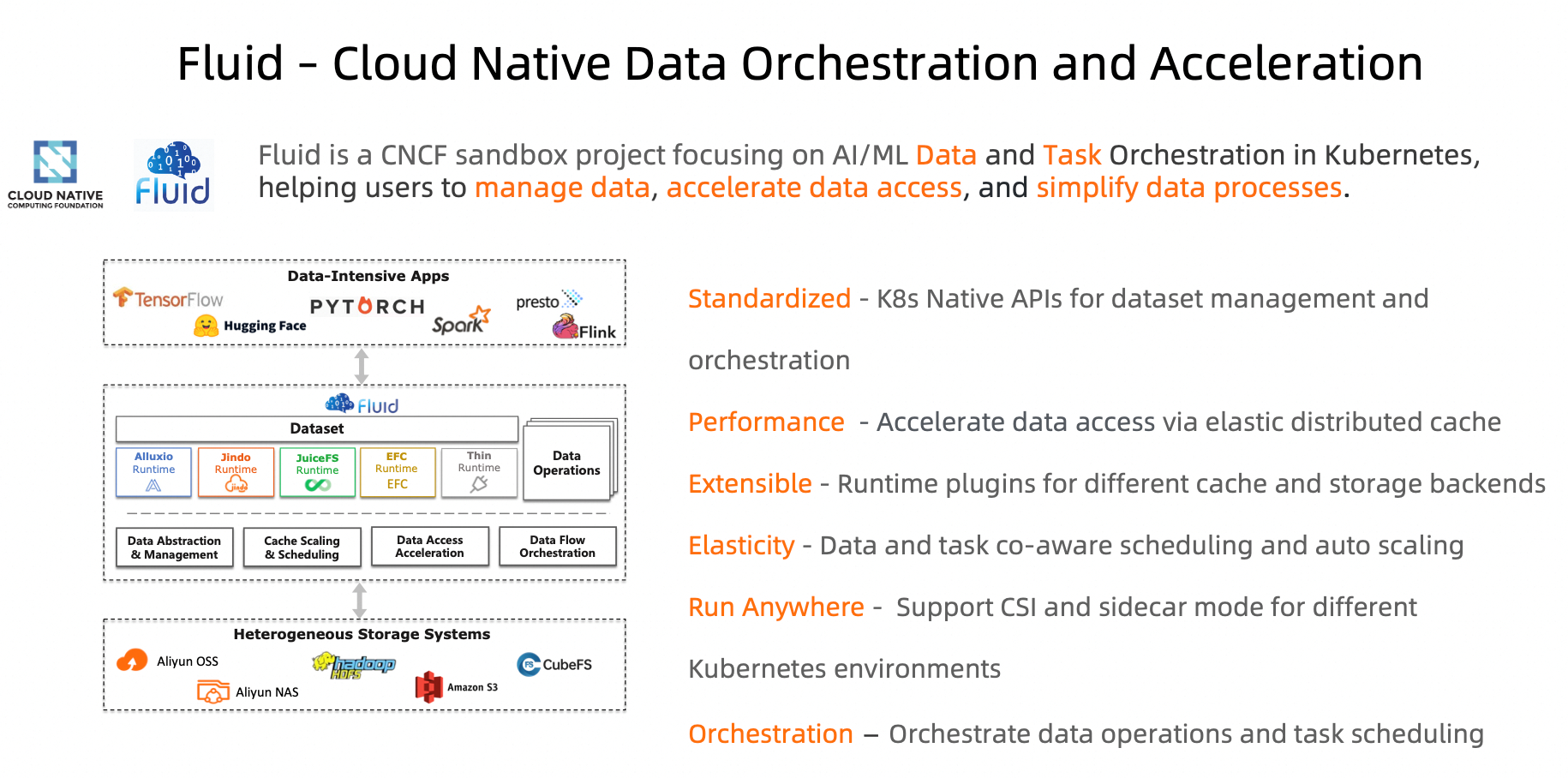
Fluid supports multiple runtimes, including JindoRuntime, AlluxioRuntime, JuiceFSRuntime, and GooseFSRuntime. JindoRuntime has outstanding capabilities, performance, and stability, and is applied in many scenarios. JindoRuntime is a distributed cache runtime of Fluid. It is built on JindoCache, a distributed cache acceleration engine.
JindoCache, formerly known as JindoFSx, is a cloud-native data lake acceleration service provided by the data lake management team of Alibaba Cloud. JindoCache supports acceleration features such as data caching and metadata caching. JindoCache can use different CacheSets for different file paths to provide different read/write policies to meet the requirements for access acceleration in different scenarios of data lakes.
JindoCache is applicable to the following scenarios:
• Online analytical processing (OLAP) (Presto queries), to improve query performance and reduce query time.
• DataServing (HBase), to significantly reduce the P99 latency and request costs.
• Big data analysis (Hive/Spark reports), to reduce report output time and costs of computing clusters.
• Data lakehouse, to reduce request costs and the catalog latency.
• AI and training acceleration, to reduce the costs of using AI clusters and provide more comprehensive capability support.
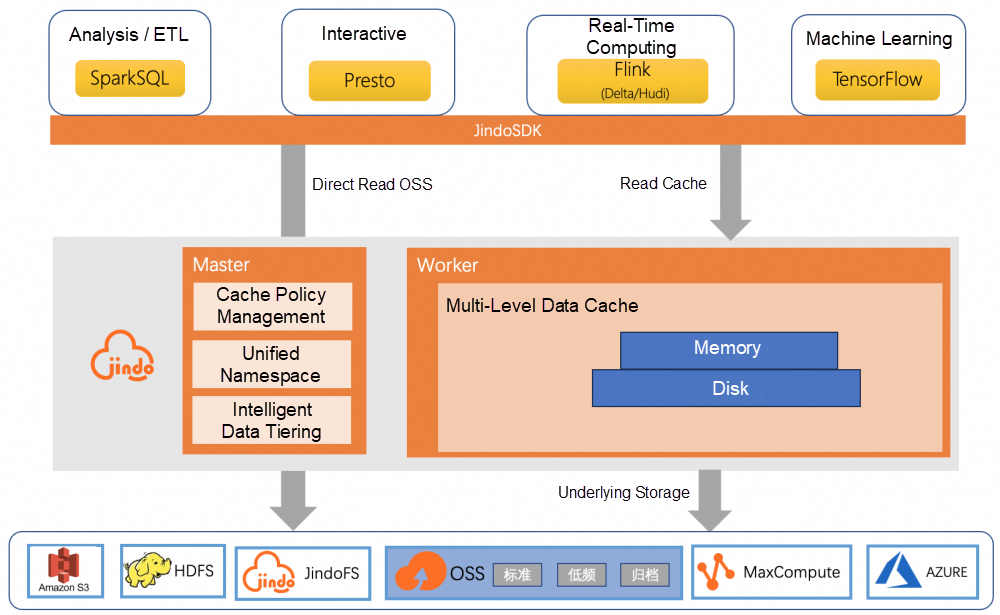
KubeDL is a Kubernetes (ASI)-based AI workload orchestration system for managing the lifecycle of distributed AI workloads, interaction with layer-1 scheduling, failure tolerance and recovery, as well as dataset and runtime acceleration. It supports the stable operation of more than 10,000 AI training tasks on different platforms in the unified resource pool of Alibaba Group every day, including but not limited to tasks related to Taobao, Alimama, and DAMO Academy business domains. You can download the open source edition of KubeDL from GitHub.
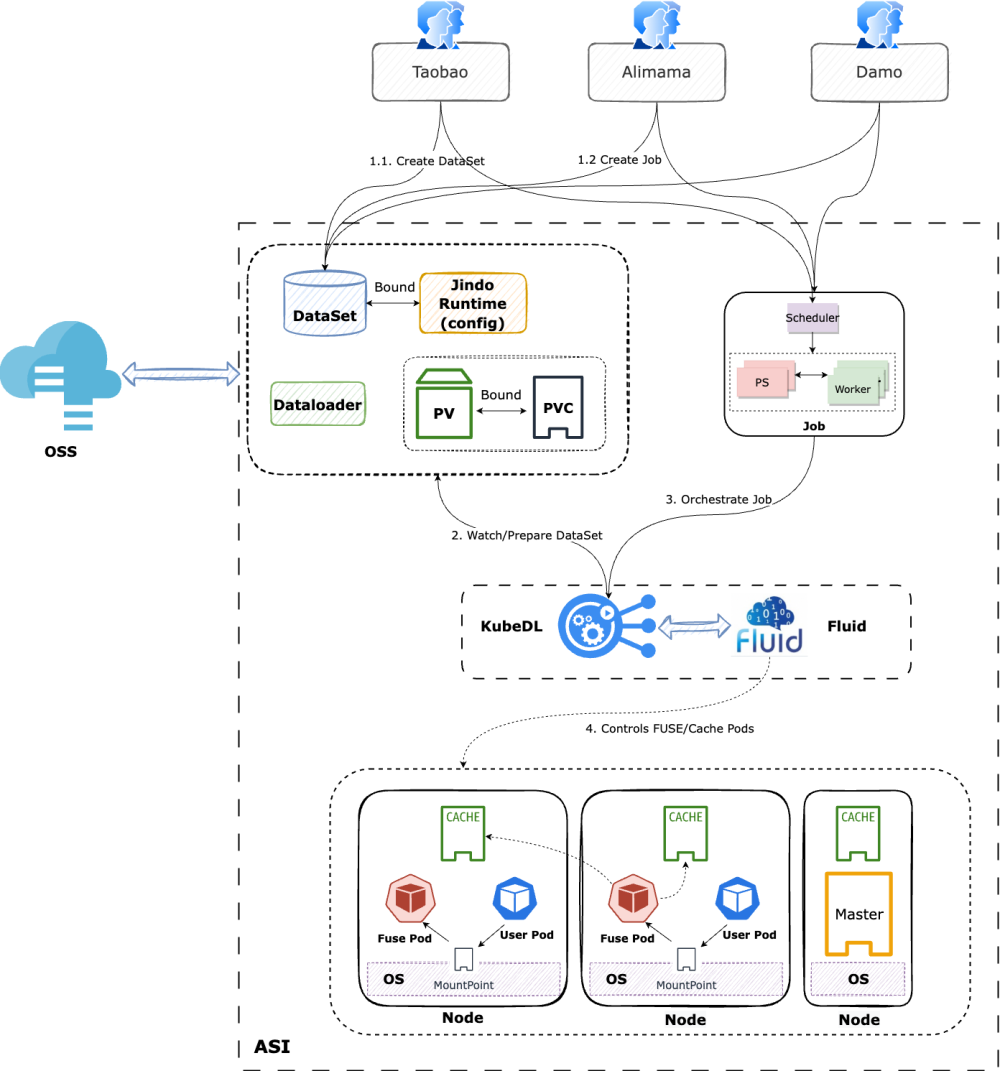
In practice within Alibaba Group, end-to-end data I/O acceleration is provided for AI platforms based on job orchestration capabilities of KubeDL and caching capabilities of JindoRuntime-based Fluid in combination with idle local resources such as memory and high-performance disks in the huge heterogeneous computing resource pool of Alibaba Group.
mounts field of datasets and tieredstore of JindoRuntime to set the mount directory of data. To prevent excessive data from being cached, you can specify tieredstore of JindoRuntime to limit the maximum cache capacity and watermark. Data that exceeds the watermark is automatically discarded. You can also specify tieredstore to set the cache path and storage media, such as SSD, memory, or HDD, to meet the needs of various scenarios. In multi-node scenarios, the replacement feature of datasets allow you to deploy multiple datasets in one cluster.mounts, such as the AccessKey ID and AccessKey secret of your OSS account. To ensure security, Fluid allows you to use secrets to configure the sensitive information. You can create a secret and specify the name of the secret in the EncryptOptions field of the dataset to bind the sensitive information.The effect of Fluid is verified in an end-to-end manner based on real user jobs in the production environment.
Task: LLaMA 13B pre-training task
Test environment:
Cluster and model: high-performance A800 server cluster equipped with remote direct memory access (RDMA) NICs and NVMe disks
Default specifications of Fluid : 24 × 32Gi cache workers and NVMe disks, which are more cost-effective than memory
Conclusion:
| I/O access mode | GPU Util | SM Util | TFLOPs (log) | TFLOPs (amperf) |
| Direct connection | 100% | ~60% | ~135 | Up to 60 (avg: 10m) |
| Fluid with JindoRuntime | 100% | Up to 80% (increased by 33%) | Up to 160 (increased by 18%) | Up to 72 (avg: 10m) (increased by 20%) |
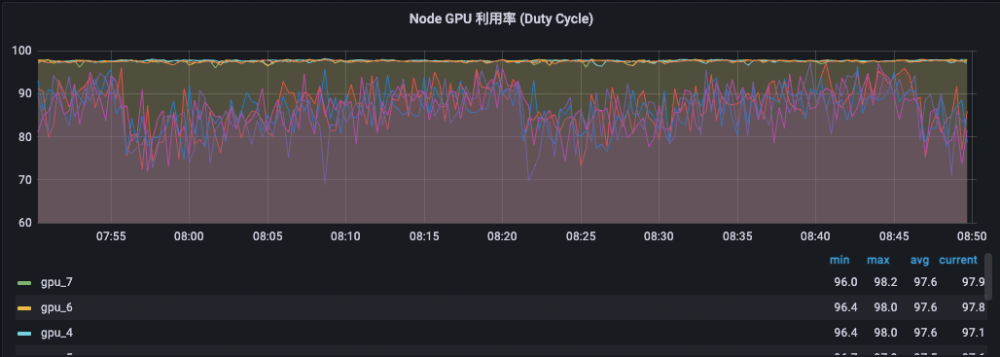
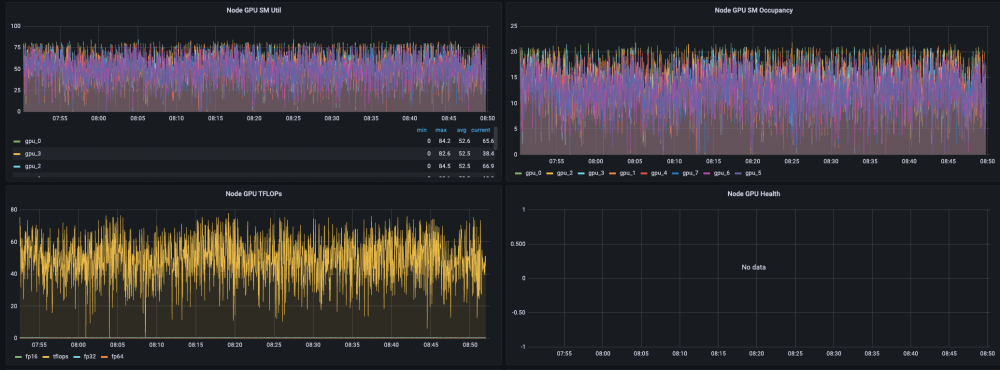
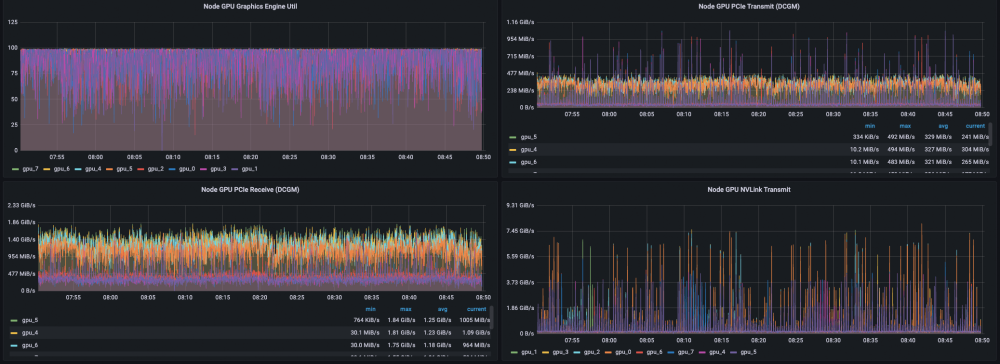
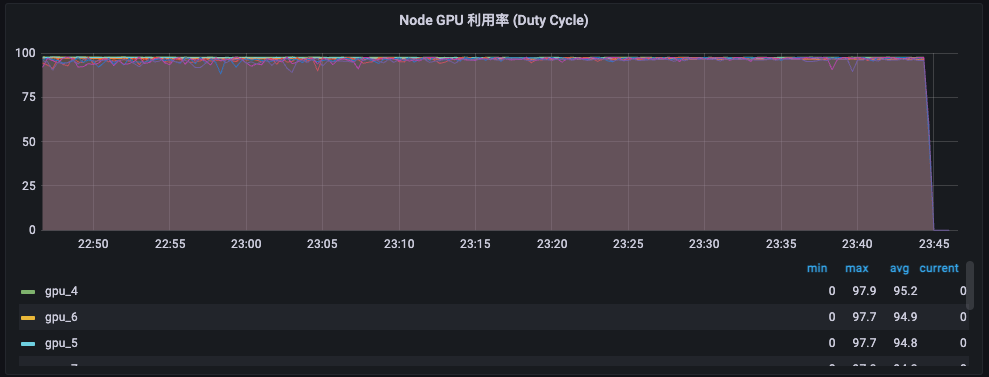
The overall average GPU utilization is also close to 100%, and the loads of GPUs are uniform and are all close to 100%.
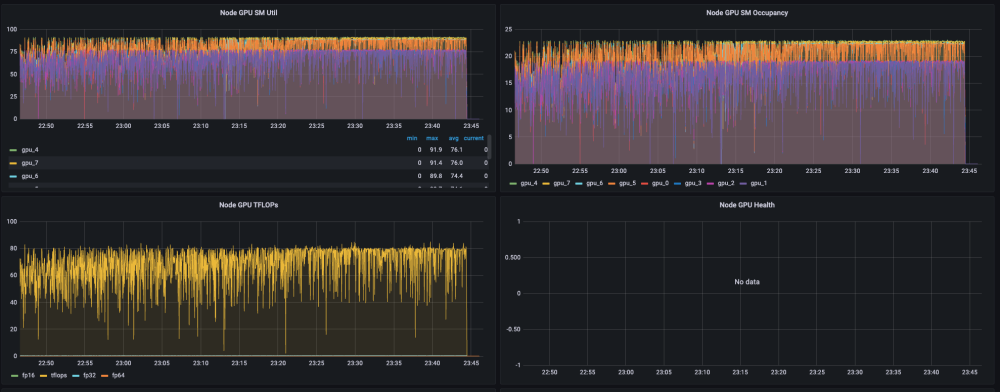
A distributed training task loads a checkpoint model file to continue training each time it is restarted. The model size ranges from tens of GB to hundreds of MB. In addition, a large number of offline inference tasks occupy many spot instance resources in the unified resource pool. Resources of an inference task can be preempted at any time, and the task will reload the model for offline inference after a failover. Therefore, a large number of jobs load the same checkpoint file after restart.
Distributed cache acceleration of Fluid converts multiple remote read operations into a single local read operation. This greatly accelerates job failovers and prevents bandwidth costs caused by multiple repeated read operations. In a typical large model scenario, the size of the model file is approximately 20 GB based on the 7B parameter size with FP16 precision. Fluid reduces the model loading time from 10 minutes to approximately 30 seconds.

In spot scenarios of distributed training, if resources of a synchronous training task are preempted, it is usually restarted globally through a failover to continue training. KubeDL cooperates with layer-1 scheduling to instruct, through interactive preemption, the rank 0 node of the training task to record an on-demand checkpoint to save the latest training progress. After the restart, the task can reload the latest checkpoint to continue training as soon as possible. This leverages low costs of spot instance resources and minimizes the costs of training interruption.
The write-through feature in the latest version of JindoRuntime of Fluid allows a restarted task to immediately load the latest model file from the local cache cluster, instead of passively loading the latest model file from the remote storage. The end-to-end failover time is reduced from 10 minutes to 2 minutes on average. This reduces the loss of idle computing power by 80%.
JindoRuntime-based Fluid plays an important role in large-scale machine learning model training for Alibaba Group. In read sample acceleration, it greatly increases the system throughput and achieves more balanced load utilization between GPUs. In addition, the abstraction layer of JindoRuntime shields the differences between JindoCache versions, thus supporting seamless upgrades. In checkpoint acceleration, end-to-end model loading is significantly accelerated, thus significantly improving performance at low costs.
In the future, Fluid is to be applied in more scenarios and provide extended features based on existing ones:
Based on cache acceleration capabilities and multi-JindoCache orchestration capabilities of Fluid, the operation mode and integration of upper-layer systems are to be optimized, to improve hardware and software collaboration and further enhance performance and support new hardware.
[1] Fluid: https://github.com/fluid-cloudnative/fluid
[2] JindoCache: https://github.com/aliyun/alibabacloud-jindodata/blob/master/docs/user/6.x/6.2.0/jindo_fluid/jindo_fluid_overview.md
For more information about Fluid and JindoRuntime, visit GitHub.
Use the aggregator_context Plug-in to Enable Contextual Query and LiveTail

510 posts | 49 followers
FollowAlibaba Container Service - August 16, 2024
Alibaba Developer - March 1, 2022
Alibaba Container Service - November 15, 2024
Alibaba Cloud Native Community - March 18, 2024
Alibaba Container Service - August 16, 2024
Alibaba Cloud Native - July 14, 2023

510 posts | 49 followers
Follow Microservices Engine (MSE)
Microservices Engine (MSE)
MSE provides a fully managed registration and configuration center, and gateway and microservices governance capabilities.
Learn More Cloud-Native Applications Management Solution
Cloud-Native Applications Management Solution
Accelerate and secure the development, deployment, and management of containerized applications cost-effectively.
Learn More AI Acceleration Solution
AI Acceleration Solution
Accelerate AI-driven business and AI model training and inference with Alibaba Cloud GPU technology
Learn More Tongyi Qianwen (Qwen)
Tongyi Qianwen (Qwen)
Top-performance foundation models from Alibaba Cloud
Learn MoreMore Posts by Alibaba Cloud Native Community